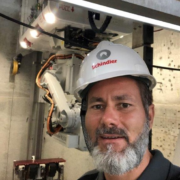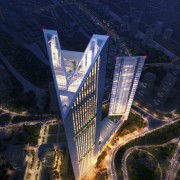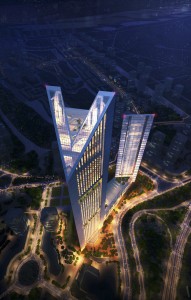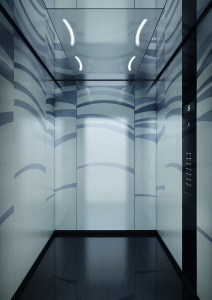How Schindler R.I.S.E Robots are Helping to Build Singapore’s Tallest Skyscrapers

In the fast-paced world of construction, Schindler Elevator Ltd. has emerged as a trailblazer with its groundbreaking Schindler R.I.S.E system. In this exclusive interview article, we have the privilege of speaking with Urs Püntener, the Head of Global Fulfilment at Schindler Elevator Ltd, to unravel the remarkable story behind their pioneering and proprietary system. Designed to automate construction processes and support the creation of some of Singapore’s tallest towers, the Schindler R.I.S.E system integrates cutting-edge robotics technology to revolutionise the industry. Building Review Journal explores the motivations, challenges, and future prospects of this innovative system that is reshaping the way we build and propel Schindler Elevator Ltd. to new heights.

Can you provide an overview of Schindler’s R.I.S.E system and how it revolutionises the construction process for tall towers?
Schindler R.I.S.E stands for Schindler’s Robotic Installation System for Elevator. This innovative technology was created in response to the ever-more demanding requirements of installation schedules. Buildings are growing taller, wider, and faster than ever before and Schindler R.I.S.E supports safe, high-quality and precise elevator installation in any building project. For the first time in history, an industrial robot is autonomously completing steps in the elevator installation process.
What were the key motivations behind developing the Schindler R.I.S.E system, and how does it align with the company’s overall vision and goals?
One of our key motivations is to utilise technology and digitalisation to:
- Improve onsite health and safety
- Proving high quality in a very sustainable, people-safe way
- Boost installation efficiency
Schindler has around 70,000 employees globally and an average of 1.5 billion people travel in one of our elevators for an average of 30 seconds every single day. Our goal is to ensure the safety of each and every one of our stakeholders. We are a company built on integrity and trust, and aim to create the most value for our customers. Innovations like that of Schindler R.I.S.E enable us to do this.

Could you explain the role of robots in the Schindler R.I.S.E system and how they contribute to the construction of tall towers?
Our Schindler R.I.S.E system can complete a floor – drilling and setting the anchor bolts required for landing doors, divider beams and wall brackets – much faster than conventional installation methods. A camera is mounted onto the platform to allow remote viewing, but the system operates independently; no operator is required. Once installed in the elevator shaft, the autonomous Schindler R.I.S.E operates around the clock until all anchor bolts are installed.
For quality control and support, a Schindler R.I.S.E operator remains on site for the duration of the installation. With Schindler R.I.S.E, the installation team is relieved of the physically demanding, repetitive, and time-consuming tasks of drilling and setting anchor bolts, improving safety in a taxing work environment.
What are some of the specific tasks or processes that robots handle in the construction of these towers, and how do they enhance efficiency and productivity?
The robotic system takes over the very time-consuming drilling and anchor bolt setting for the elevator material fixation such as guide rail system, landing doors and divider beams, done today in a fully manual manner. With Schindler R.I.S.E, this will be done fully automatically. And once installed in the elevator shaft, the Schindler R.I.S.E can independently operate around the clock – no breaks needed – this is setting a new standard for installation speed and project schedules.

How does the Schindler R.I.S.E system address safety concerns and ensure a secure working environment for both human workers and robots?
Drilling holes and setting anchor bolts is a repetitive, noisy, dusty and physically demanding task that happens in a closed hoistway, many meters up in the air. With Schindler R.I.S.E, the installation team is no longer exposed to this harsh, dusty, and noisy environment – where temperatures can range from above 40°C to below 0. Instead, the teams can focus their energy on the installation steps where they add value.
Can you discuss the benefits and advantages of using the Schindler R.I.S.E system compared to traditional construction methods, particularly in terms of speed, precision, and quality?
Schindler R.I.S.E cutting-edge technology provides an unprecedented installation speed compared to conventional methodologies which support the builder’s overall schedule. While there is often concern that increased speed means reduced quality, this is certainly not the case with Schindler R.I.S.E.
In fact, with Schindler R.I.S.E we can deliver the same, if not better, installation quality compared to conventional installation methods. By using a digital hoistway map, the system can very accurately and precisely place the required anchor bolts for each floor. Additionally, since the system can integrate directly with BIM models, conflicts in planning can be reduced.
What were some of the challenges faced during the implementation of the Schindler R.I.S.E system, and how were they overcome?
The main challenge was to develop the overarching system software to bring together the different subsystems (vertical movement / detecting the correct drilling location / robotic arm / fetching the anchor) as this has never been done before. The team was challenged and it took time until the system was working autonomously but also reliably. The development of Schindler R.I.S.E was an intensive, but incredibly rewarding, learning curve for all involved.

How does the Schindler R.I.S.E system contribute to sustainable construction practices and environmental considerations?
The technology improves health and safety and introduces new opportunities for sustainable workplaces. When thinking about the ESG impact, Schindler R.I.S.E contributes to a deeper and more consistent impact in the workplace. We are committed to ensuring our worksites are safe and secure for everyone. Schindler R.I.S.E ensures that operators can remotely control the robot, from an ergonomic position and away from the noisy and dusty elevator shaft.
Can you share any specific examples or success stories where the Schindler R.I.S.E system has been employed in the construction of Singapore’s tallest towers?
You can view a BCA testimonial from Jardine Schindler. Schindler was a part of the Avenue South Residence project in Singapore. It is the world’s highest Prefabricated Prefinished Volumetric Construction (PPVC) building. Standing at nearly 200 meters tall, Avenue South Residence’s two towers house over 1,000 apartments and, in total, 10 of the elevator shafts were drilled by a Schindler R.I.S.E robot called Lea.
What are the future prospects for the Schindler R.I.S.E system? Are there plans to expand its implementation in other projects or locations globally?
Schindler R.I.S.E has been used to successfully complete projects on three Continents, including Poland, Austria, Germany, Switzerland, Israel, the UAE, China, Singapore and Australia. One of the next exciting missions of the robot will be in Sao Paolo Brazil, at the JKSquare construction site. In addition to the above-mentioned project, there are several others in the pipeline, such as K8 in Stavanger Norway, The Bridge (Bellona Tower) in Warsaw Poland and Masar Makkah in Saudi Arabia. The adage of choosing between speed and quality is, quite simply, outdated. By using innovative robotic technology, Schindler can bring both a high-quality, and efficient installation to its customers, while also improving worker health and safety.



 VIETNAM – Developed by VietinBank, one of the largest banking groups in Vietnam, the 300,000 m2 mixed-use project will include office and commercial space. The new VietinBank headquarters is scheduled to be completed by 2017.
VIETNAM – Developed by VietinBank, one of the largest banking groups in Vietnam, the 300,000 m2 mixed-use project will include office and commercial space. The new VietinBank headquarters is scheduled to be completed by 2017.

